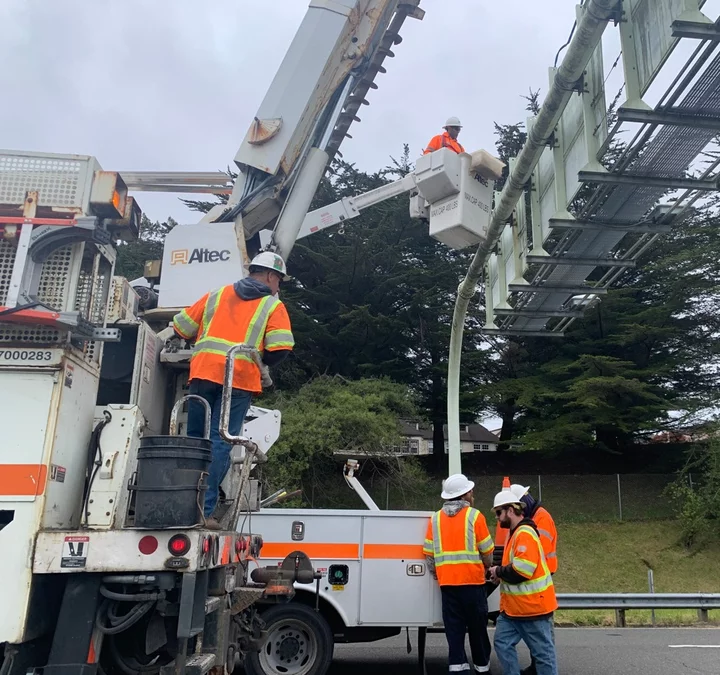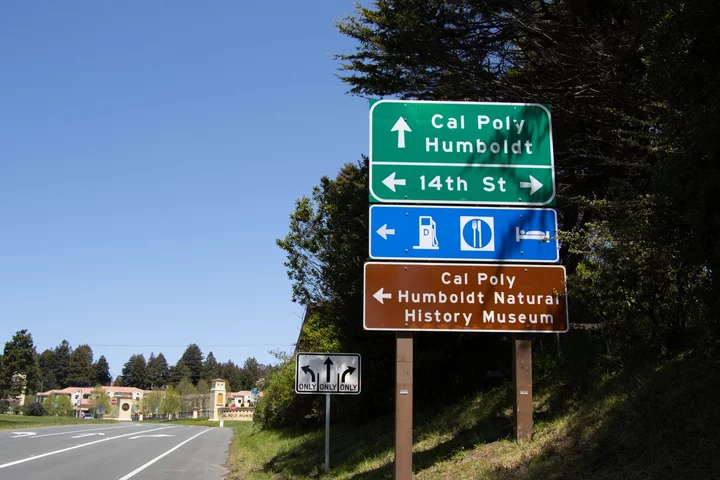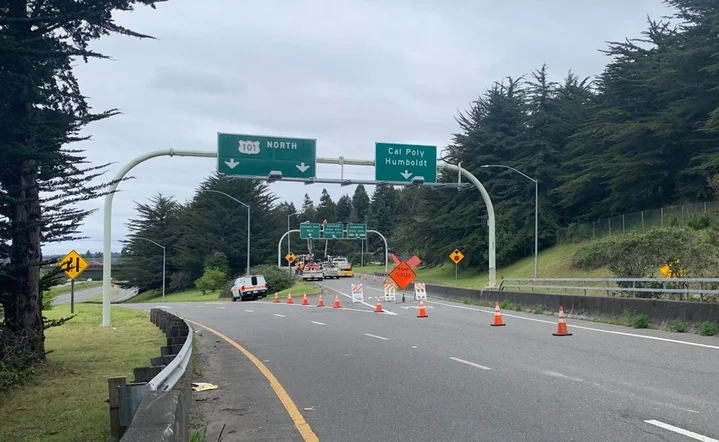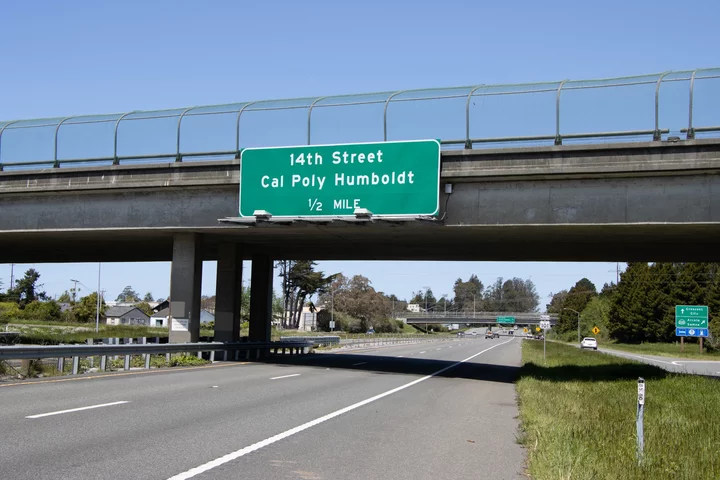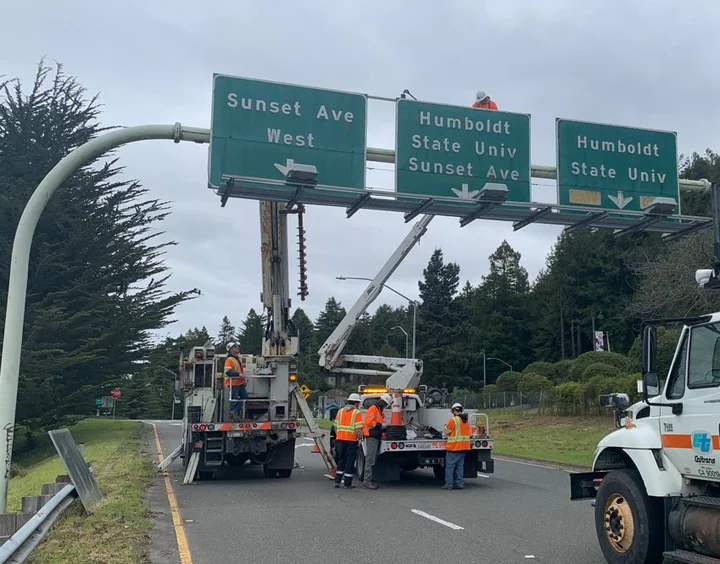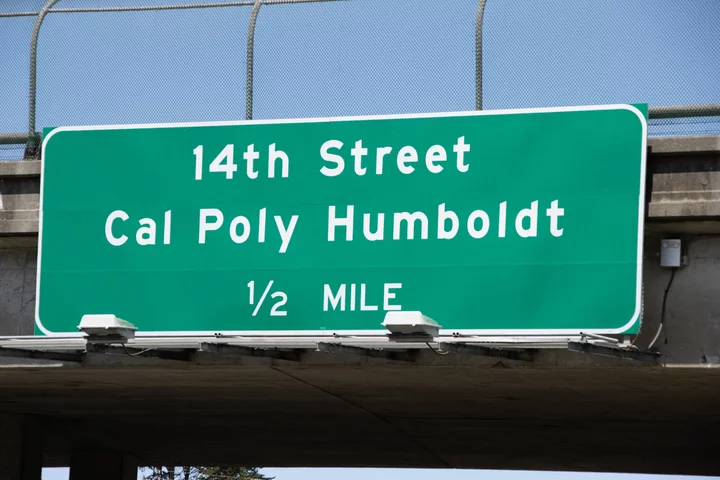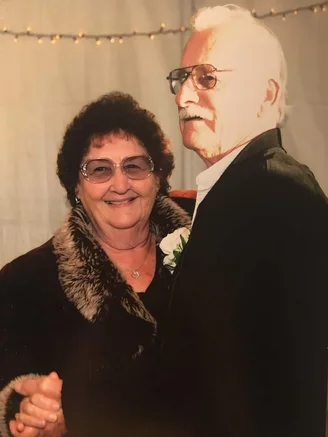Balancing Act: Newsom’s Plan to Cover California’s Ballooning Budget Deficit
Alexei Koseff / Friday, May 12, 2023 @ 11 a.m. / Sacramento
Gov. Gavin Newsom unveils his revised budget proposal for 2023-24 during a press briefing at the state Natural Resources Agency in Sacramento on May 12, 2023. Photo by Rahul Lal, CalMatters
California’s estimated budget deficit has grown by $9 billion since January, Gov. Gavin Newsom announced today, though the governor downplayed the severity of its potential impact on critical government services and programs.
During a press conference at the California Natural Resources Agency in downtown Sacramento, Newsom unveiled a revised spending plan that will rely on some additional fiscal gimmicks — including shifting funding sources and internal borrowing — to address a projected $31.5 billion gap in the 2023-24 state budget.
“We have a $31.5 billion challenge, which is well within the margin of expectation and well within our capacity to address,” Newsom said.
Despite the growing shortfall, California’s overall budget is now expected to be $306 billion, including special funds, less than a 1% decline from the current fiscal year, a record $308 billion.
Newsom proposes to close the deficit by shifting $3.3 billion in existing commitments out of the general fund, including paying for $1.1 billion in climate spending and $1.1 billion in college student housing projects with bonds, and pulling back another $1 billion in unused money from programs such as middle class tax refunds and utility bill support for low-income residents.
Under the governor’s plan, the state would also borrow $1.2 billion from special funds and extend a $2.5 billion on managed care health plans to address the spending gap. Extensive savings would remain largely untouched, though Newsom did propose to make a $450 million from one reserve account.
California’s fiscal picture has largely worsened since January, when finance officials projected the state would face a deficit of $22.5 billion. Newsom called it a “modest shortfall” and proposed to delay some spending commitments, reverse recent steps to shore up the state’s fiscal health and shift around funding sources to limit program cuts.
Enduring high inflation, turmoil in the regional banking sector and a showdown in Washington, D.C., over raising the federal debt limit have all deepened the economic headwinds. Monthly tax revenues came in billions of dollars below forecasts this spring, and fears of a recession continue to loom, which Newsom said could reduce state revenues by tens of billions of dollars even in the mildest scenario.
“That is an uncertainty that we must take very seriously and very soberly,” he said.
Adding to the unpredictability, most Californians don’t have to file their income taxes until October because of the intense damage and disruption from winter storms. Officials estimate that $42 billion in payments will be delayed until the new deadline.
The governor’s updated budget proposal kicks off a month of negotiations with the Legislature, which must pass a budget by June 15 to get paid.
Legislative leaders have been largely optimistic about the budget situation, arguing that they have plenty of fiscal tools at their disposal to avoid deep spending cuts. Last month, Senate Democrats pitched raising taxes on large corporations, an idea that Newsom quickly rejected.
With less money to go around, however, the challenge is getting everyone to agree about what should take the hit. Some lawmakers have already raised objections to potential cuts for climate programs and public transit funding that the governor proposed in January.
It will be the first budget process for many of them; nearly a third of the entire Legislature was newly elected in November. And aside from a brief downturn at the start of the coronavirus pandemic, most have faced only surpluses and growing revenues during their tenures. Because of term limits, there are only a handful of legislators who were around during the last recession more than a decade ago.
###
CalMatters.org is a nonprofit, nonpartisan media venture explaining California policies and politics.
BOOKED
Today: 5 felonies, 13 misdemeanors, 0 infractions
JUDGED
Humboldt County Superior Court Calendar: Today
CHP REPORTS
No current incidents
ELSEWHERE
RHBB: Hatchery Fire Reported South of Blue Lake Tuesday Afternoon
Governor’s Office: Governor Newsom proclaims Disability Employment Awareness Month
Governor’s Office: More parks for kids: California invests $38 million to boost outdoor opportunities for youth as Trump limits access
Governor’s Office: Governor Newsom signs bills further cracking down on hate and antisemitism in California schools
(PHOTOS) GET PUMPED: New College Name Means New Freeway Signs
Andrew Goff / Friday, May 12, 2023 @ 9:24 a.m. / Traffic
New signs for the times have popped up in Arcata. Cal Poly Humboldt, you are now fully christened. Details from Caltrans below:
JUST IN TIME FOR GRADUATION! Our North Sign Crew replaced Humboldt State signs with new Cal Poly Humboldt signs on U.S. 101 in Arcata. Please be mindful to watch out for visitors and increased traffic this weekend for commencement on Saturday at Redwood Bowl.
From Caltrans District 1, we congratulate all the graduates on your outstanding accomplishment!
BEHIND the CURTAIN: Local Actor and Cal Poly Humboldt Graduate Makes Directorial Debut with Existentialist Play No Exit at NCRT
Stephanie McGeary / Friday, May 12, 2023 @ 7:55 a.m. / Theater
From left: Andrew Hempstead (Garcin), Bella Rose (Estelle) and Liz Whittemore (Inez) in No Exit at NCRT | Photos: Stephanie McGeary
###
Since the first time local actor Amelia Resendez read the Jean-Paul Sartre play No Exit when she was in high school, she has dreamed of someday being involved in a production of it. So it really is a dream come true to be making her directorial debut with the show, currently running at North Coast Repertory Theatre.
“I’ve been thinking about this play ever since I first read it,” Resendez told the Outpost in a post-show interview at the theater. “I’ve always loved these characters. It’s a dream play of mine to be a part of … It’s not like most shows you see.”
And No Exit definitely is not like most other shows you see. Written by Sartre in 1944, the existentialist play features a cast of only four and takes place entirely in one sparsely decorated room. There are no set changes, no costume changes and virtually no entrances or exits from the stage, apart from each character’s initial entrance.
The story revolves around three people – Garcin (played by Andrew AJ Hempstead), Estelle (Bella Rose) and Inez (Liz Whittemore) – who have died and are entering into some kind of afterlife. After the Valet (played by Sun Lanzilli, but on opening weekend was played by understudy Holly Robertson) ushers each character into a room holding only two sofas, a chair, a lamp and a fireplace and mantel topped by a bronze state, the three main characters begin to get to know each other, unfolding their stories and confessing the dastardly things they each did in their lives on Earth.
It becomes clear that the characters are in some form of hell for the atrocious sins they committed. But “hell” is not what they expected – rather than the fiery lava, demons and torture chambers they thought they’d face, the three characters are forced to eternally endure something far worse: each others’ company. Each character has their own eccentricities and irritating traits, but they also share a couple of major things in common: they are selfish, self-centered and, like many humans, desperate for others’ approval.
“Sartre is an existentialist and his whole thing is that the worst kind of people are the ones who need other people’s opinions to dictate who they are,” Resendez said. “They’re very reliant on how other people see them.”
Resendez graduated from Cal Poly Humboldt with a degree in Theater Arts and has been involved in many local productions, including recently playing the role of Pearl in Redwood Curtain’s production of Bull in a China Shop. But this was Resendez’s first time directing a production. Though she didn’t have to undertake the difficult task of memorizing lines, she said, there were many other elements to keep track of that presented unique challenges for her to overcome.
Though Resendez was always drawn to No Exit’s script, she had actually never seen a production of it, since it is not a play that very many theatre companies choose to put on. So Resendez didn’t have other productions to inspire her, but this did mean that her directorial choices all came from her own vision of how the play should look and sound.
Resendez also designed the set and some elements were called for in the script because they are referenced by the characters, but other choices – such as the entrance door being placed in the middle of the room and framed by neon blue lighting – were made by Resendez. The director said she wanted the door to be a centerpiece of the set, but at the same time something that didn’t pull focus for the entire show. Resendez made another interesting choice to include the sound of a clock ticking throughout the entire show, which added a vexing element, while at the same time was something the viewer will sometimes forget about.
These choices definitely added to the tense feeling of the show, which touches on many themes including morality, deception, selfishness, vanity and – of course – death. Though the play is full of comedic moments, it is also dark and is the kind of show that leaves the viewer pondering the absurdity of life, relationships and human nature.
Liz Whittemore, who has been involved in many local theater productions, said that she was a philosophy major in college and was immediately drawn to this script for its philosophical themes and complex characters. Unlike physical comedy or musical theater, which tend to be more popular, this play is much more dialogue-heavy, character-driven and psychological.
“This [show] is much more dialogue-heavy and character-driven, it’s very psychological,” Whittemore said in a pre-show interview backstage. “It has a level of depth to it that can either fall flat or really enrich the audience.”
For this type of show, Whittemore and the other actors said they appreciated that there is a small cast because they really get a chance to become close and to feel more comfortable being vulnerable with each other.
“I love small casts,” Andrew Hempstead, who has been in many productions at NCRT and Ferndale Repertory Theatre said. “A large cast is powerful in its own right. But for a production like this, [a small cast] does a lot for building the ensemble.”
And feeling a connection with both their castmates and the audience is a big part of why these local actors continue participating in local theater. There is a kind of experience that comes with a live show that is very different from what someone gets watching a movie or a tv show. “Something is created when you’re doing something live with other people,” Hempstead said. “Theater is not going away. COVID has shown us that.”
Resendez added that theater is an important part of a community and life in general, because it can be used to address many different subjects and themes.
“I never understand when someone says theater is not an important thing to teach in school, because literally every single subject is used in theater,” she said. “It’s so fantastic that with shows like this you get to see all of that come together.”
No Exit will continue its run at NCRT – 300 5th St, Eureka – on May 19 through 21 and June 2 through 4. Sunday, May 21 will feature a “masked matinee,” where masks are required to provide a space for the immunocompromised and most vulnerable in our community. You can purchase tickets at this link.
CONVERSATIONS: Sammarinese Actor and Artist Luis Busignani on Splitting Life Between the Enclave and the USA
LoCO Staff / Friday, May 12, 2023 @ 7:50 a.m. / :)
Today in San Marino Week: The Outpost’s John Kennedy O’Connor is please to welcome Luis Busignani, a New York native with deep Sammarinese roots, who has split time between the USA and the enclave. What does it mean to be Sammarinese in the world?
Video above, rough machine transcript below.
###
JOHN KENNEDY O’CONNOR:
Well, welcome to another San Marino Conversation, and I’m really pleased to say we’re joined by Luis Busignani. Did I get that right?
LUIS BUSIGNANI:
Yeah.
O’CONNOR:
Luis, it’s lovely to meet you. Thank you.
BUSIGNANI:
It’s like Luigi in Italian.
O’CONNOR:
Okay. Yeah. But you have a slight accent. You don’t necessarily sound like you’re from here. Have you lived in the US at all?
BUSIGNANI:
Yeah, I am a native American speaker. I am from Brooklyn, New York. Oh, wow. You know, after the Second World War, there were such huge migration fluxes to America and all the New York residents’ surroundings. So my grandparents moved to New York. From San Francisco.
O’CONNOR:
Marina?
BUSIGNANI:
Yeah, yeah, my mother’s side grandparents moved to New York and where my mother was born and my brother and me were born.
O’CONNOR:
So you were born in New York?
BUSIGNANI:
Yeah, Brooklyn.
O’CONNOR:
When did you come back to San Marino?
BUSIGNANI:
Actually, it’s such a long story, but not so long. You know, it’s like, I did huge things in New York, and I’ve been living mostly in New York and in Italy because of my job. You know, I work on acting, teaching drama English. I am an artist, illustrator. I’m working on different things and different projects. So that’s the reason why traveling and getting different bases all around the world sounds really nice.
O’CONNOR:
Okay, now what do you do here in San Marino? I believe you work in the jewelery industry.
BUSIGNANI:
Yeah, you know, after the… they say it’s finished? I don’t know, because I was living in New York once again, but I got stuck here in Europe because of the COVID, you know. That was such a hard period for us artists, and, you know, who works in entertainment and stuff like that. But we survived, and I kept on working on remote teaching and writing and cooperating with different people, and, you know. And I’ve been teaching English as a second language to Italians and kids, adults as well.
O’CONNOR:
Our audience is very interested to know because we are based around the small, very small, city of Eureka in California, and yet that’s more or less the same size as San Marino. So here you have this tiny little city which is about 26,000 people but you have San Marino, an independent nation, a very old independent nation. How does San Marino find its way in the world? How does it even exist?
BUSIGNANI:
I don’t know because I think that the real San Marino ones strongly believe in the fact of there is San Marino within the world. I think that those people fought a lot for their independence and to be considered such a nation with their own laws and regulations and everything and they protected a lot, themselves a lot from the rest of the world, you know, like conflicts and wars. And this is something coming from a really antique past, I think, that even now if you talk to natives here, they sound like really linked to their own nation, like San Marino and people from here.
O’CONNOR:
It is very much a unique identity. People don’t, for example, they don’t think of themselves ever as Italians, even though Italian is the language that they use.
BUSIGNANI:
Yeah, that’s really singular because you know as an American, all the times in New York as well, it counts billions of people, but nobody knows San Marino as a republic, honestly. As you said before, most people think about that one in California.
O’CONNOR:
There is a San Marino in California.
BUSIGNANI:
It’s really strange because it’s got the same colours on its flag, the one in California, and quite a similar icon on its flag, and I honestly don’t know the reason why it’s like that. But anyway, what I know through books, and you know, that’s like, since the very beginning, a man who was kind of a sculpture during the Christian persecutions caused by the Roman emperors, I think it was Dio Clasci, Dio Clasciano, that’s in Italian, and this man was persecuted because he was a Christian, faithful to that religion, sort of, and with a friend named Galileo, they moved to the Adriatic Sea coast, and once they split it, and Marino, this man, moved to this land, named now San Marino for this reason, and he founded one of the first small communities of people who believed in Christ, and they had different caves which they lived in.
O’CONNOR:
They lived in the caves on the mountain? Yeah.
BUSIGNANI:
Yeah, that’s true. And that was the very beginning of the Sammaritan’s history.
O’CONNOR:
And it is very proudly the oldest republic, certainly in Europe. I think many people think it may be the oldest republic in the world. Yeah. So it was always a very democratic, very… Yeah. And in fact, now you have this unusual system. You have two heads of state, I believe. Two at once. Yeah. How does that work? And with so few people, I’m curious. Surely everybody will eventually be the head of state for San Marino. Yeah.
BUSIGNANI:
Yeah, that’s true, that’s true. It’s really unique, it’s really unique, it’s really unique, you know. Because as a Sammaritan, you could get your own privileges, you know. It’s like the passport and just not citizenship naturally, but the possibility to live here with no troubles and to get a job.
O’CONNOR:
I mean, there is no crime here at all. No. I mean, I know you have a prison, in fact, it’s just across the street, but there’s only one person in there and he’s an ex-government official, I believe, for corruption. Yeah. It’s a very… That’s true. You have no military and you have… I mean, the only people I suppose would ever want to invade would be the Italians, and why would they? They’ve let you be peaceful here for two centuries. But it’s interesting because San Leo, who you mentioned, San Leo is now on another mountaintop. So you have these two mountaintop communities. So why does San Leo never become independent? It’s always been part of Italy, whereas San Marino was able to survive.
BUSIGNANI:
It’s really singular, it’s really singular because San Leo is part of Italy. It’s like in Illia Romagna, and it’s a region, it’s a small center there. They name it Comuni in Italian. Yeah, yeah, yeah, that’s it. Marino, that founder was really strong and proud of opening a new way to find an independence and independence.
O’CONNOR:
Well it’s worked very well. It’s a beautiful place, no crime. It’s raining like crazy outside, but normally it’s beautiful weather whenever I’ve been here before. It’s very interesting. Well, I don’t want to give anyone in Eureka any ideas about becoming an independent nation, but you never know. It’s more or less the same size, so perhaps when I go home, Eureka will be the first republic within the US. You just never know. Louis, it’s a real pleasure to meet you. Thank you so much for joining us for a San Marino conversation. And thank you for joining us, and hopefully join us for another San Marino soon. We have one more conversation before I leave, and we’ll look forward to that. Bye-bye.
OBITUARY: Carol Jean Swain, 1939-2023
LoCO Staff / Friday, May 12, 2023 @ 6:56 a.m. / Obits
Carol Jean Swain, 83, went to be with her Lord and Savior, Jesus Christ on March
29, 2023.
She was born on December 9, 1939, to Forrest Gurnsey and Ila May Bandy Gurnsey. Carol had many creative talents. She painted many beautiful paintings on canvas and old saw blades. She enjoyed crocheting and knitting, making gifts for her friends and family. The family always looked forward to Grandma Carol’s hand made slippers, wash cloths, afghan blankets and scarves. She loved traveling with her husband and little doggies in their RV. They were always adventurous in their RV traveling, trying out new places and parks and meeting new people. One of her favorite places to RV was close to home, at the Church Camp in Richardson’s Grove where they enjoyed visiting and helping their friends Bruce and Theresa. Carol always loved and enjoyed attending ladies lunch and bible study. She was a collector of butterfly trinkets and jewelry. She loved to read, but unfortunately, the last six months made that a difficult thing to do so she turned to watching her old cowboy movies. She was loved so much and is missed beyond measure.
Carol is survived by her husband Gerald “Steve” Swain, Son Forrest Johnson (Judy), Step-sons Gerald Swain (Jessica), Scott Swain (Taj), Grandchildren- Shayla Verbich (Mike), Shaun Bagley, Linnea Haycock (Tim), Meagan Johnson, Seth Johnson, Christopher Swain, Cassondra Swain-Stoner, Kenny Swain (Tessa), Shelsey McDonald, Dustin Swain, Tyler Swain, Shyanne Swain. Great-Grandchildren- Dylan, Braydan, Kolby, Dusty, Taylin, Lucus, Ariana, Aubree, Meagan, Connor, Rachael, Cash, Koda, Zeipher, Kinsley, Remington and Brody. Nephews Michael Murrish (Gina) and Stephen Murrish (Becky), Niece Dawna Kyber (Tim). Doggies, Heidi, Toby and Toto and her feathered friend Beamer.
She is preceded in death by her parents Forrest and Ila May Gurnsey, her Sister and Brother-in-law Betty Murrish and Don Murrish, Son Franklin Johnson, Step-Daughter Sherry McDonald, Step-Son Donald Swain, Nephew Curtis Murrish, Granddaughter Crystal, Grandsons, Brandon Swain and Steven Swain. A memorial service will be held on Saturday, May 20, 2023 at 1:00p.m. at Sunrise Cemetery, 3315 Newburg Road, Fortuna, followed by a Celebration of Life at Wood Street Chapel, 1649 Wood Street, Fortuna. In lieu of flowers, you may donate to Wood Street Chapel.
We would like to thank Hospice of Humboldt for their care and support.
###
The obituary above was submitted on behalf of Carol Swain’s loved ones. The Lost Coast Outpost runs obituaries of Humboldt County residents at no charge. See guidelines here. Email news@lostcoastoutpost.com.
HUMBOLDT TODAY with John Kennedy O’Connor | May 11, 2023 (San Marino Week, Day 3)
LoCO Staff / Thursday, May 11, 2023 @ 6:33 p.m. / Humboldt Today
HUMBOLDT TODAY: It’s Humboldt County news delivered on a darkened street corner on the European microstate of San Marino… what of it?! Catch up on the Humboldt day that was in today’s online newscast with John Kennedy O’Connor.
FURTHER READING:
- UPDATE: APD, Humboldt County Mental Health Responded to Domestic Disturbance in Valley West Wednesday Night
- Eureka Police Officially Arrest One Suspect in April Assault, Police Chase That Resulted in Harris Street Shootout
- (UPDATE: FOUND) Sheriff’s Office Seeks Public’s Help in Locating Woman Who Went Missing This Morning, and is Possibly At Risk
HUMBOLDT TODAY can be viewed on LoCO’s homepage each night starting at 6 p.m.
Want to LISTEN to HUMBOLDT TODAY? Subscribe to the podcast version here.
Arcata Man Arrested on Suspicion of Sexually Assaulting Two Children, Sheriff’s Office Says
LoCO Staff / Thursday, May 11, 2023 @ 4:35 p.m. / Crime
Press release from the Humboldt County Sheriff’s Office:
In late February of this year, the Humboldt County Sheriff’s Office Major Crimes Division received information regarding an adult male suspected of sexually assaulting two (2) juvenile females who were ages nine (9) and ten (10) at the time of the incident. The male was not a family member but was known to the female juveniles.
During the course of the investigation, with the assistance of the Humboldt County Child Abuse Services Team (C.A.S.T.), the suspect was identified as Lucas William Russell, age 21 of Arcata.
On 5/11/2023 at about 10:00 a.m., Investigators with the Humboldt County Sheriff’s Office Major Crimes Division served a Search Warrant and Arrest Warrant at a residence in the 11000 block of West End Rd. in Arcata. Based upon statements and evidence located during service of the Search Warrant, Investigators confirmed that Russell had assaulted the two (2) minor juveniles.
Russell was arrested without incident and booked into the Humboldt County Correctional Facility on felony charges of Sexual Intercourse with a Minor Age 10 or Younger – 2 counts (PC 288.7(a)), False Imprisonment (PC 236), and Dissuading a Witness/Victim by Implied/Threatened Force or Violence (PC 136.1 (c)(1)).
The case is being submitted to the Humboldt County District Attorney’s Office for prosecution. Russell’s bail has been set at $1,500.000.
Anyone with information about this case or related criminal activity is encouraged to call the Humboldt County Sheriff’s Office at (707) 445-7251 or the Sheriff’s Office Crime Tip line at (707) 268-2539.


